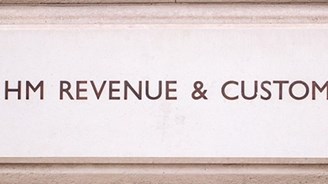Royal babies and the FRS 102 fair value anarchists

What does the birth of Princess Charlotte have in common with fair value accounting under FRS 102? Well...not a lot. But in an attempt to make an article on FRS 102 topical, I've found a tenuous link and I'm running with it. To make this work we'll need to look at hierarchies, monarchies and what happens when you sit fourth in line to the throne.
Setting the scene
Let's look at the fair value rules in respect of financial instruments, particularly investments, and their practical application.
Here's the scenario:
- You have a large investment currently accounted for at cost.
- You are adopting FRS 102 for the first time.
- You think FRS 102 means that you need to include this investment at fair value.
What do you do?
FRS 102 says that where you have shares in a subsidiary, joint venture, or associate you have a policy choice between fair value accounting or cost less impairment. So if the investment is a sub, for example, you could just carry on as before if you so choose. Let's presume, in this scenario, that we're not in that boat and our investment has unwittingly sailed into the choppy waters of FRS 102, Section 11, Basic Financial Instruments.
When it comes to fair value accounting in FRS 102, similar to IFRS, there is a hierarchy.
In FRS 102, this hierarchy essentially gives you three routes to take when trying to establish a reliable (we'll come back to this word) fair value for use in the accounts.
- At the top of the hierarchy is the option of using the price of an identical share traded in an active market (we'll call this option 'Liz'.) Liz will normally be the bid price.
- The next rung down the ladder is using a recent trade of an identical asset, as long as it is recent and there haven't been significant changes to market conditions (meet 'Chas').
- Finally, if Liz or Chas don't work, FRS 102 tells you to look at a valuation technique to ascertain fair value - we'll call this one 'Fluffy Carrot Top' rather than 'Wills' as it's implicitly a bit less reliable (and whilst more interesting has a greater chance of not being used).
To continue with our example, if our investment is a holding in a traded company we have to account for it at fair value. In all likelihood we'll use Liz to come up with the value and our transition should run smoothly as we disclosed the Liz valuation last year (even though the investment was on the balance sheet at cost).
If our investment was a recently acquired private company shareholding then there's a good chance that we're looking at Chas to drive the assessment of fair value.
If, however, we have a minority investment in a private company that we acquired 10 years ago for 99p then we're (not always, but) probably in 'Fluffy Carrot Top' territory.
Let's assume in this final case that the 99p business had gone from strength to strength and the shares are probably now worth a fair amount (at least a material amount) in the context of our accounts.
In this scenario we (by which, if you're an auditor, I mean your clients) look at valuation techniques to come up with a reliable fair value.
It's worth mentioning here that private company investment valuations are no walk in the park. We'll look at some of the practicalities in a separate article at a later date.
FRS 102 offers limited guidance in this area. But essentially, you'll probably be looking at a number of different methods to ascertain whether the value calculated looks reliable. If it is deemed reliable, the fair value ends up on the balance sheet, with movements from one year to the next going through profit or loss.
The link has to do with there being a fourth route. To continue the final scenario above, If you had asked the client to put some numbers into a couple of Fluffy Carrot Top models and the outcomes looked sensible (and reliable) then you'll end up using fair value in the accounts.
If however, the valuations are throwing out unreliable values you get the chance to be a Fair Value Anarchist. Before we look at what a Fair Value Anarchist can do, the word reliable should be explained further.
In the context of shares where there is no active market, the reliability of a valuation comes down to two things:
By their very nature valuations are subjective exercises. Though, as FRS 102 notes, if a share has been bought from a third party, it will normally be possible to determine a reliable fair value.
Where our valuation is unreliable, the Fair Value Anarchists revert to cost accounting. However, just like the cute little Princess Lottie, this fourth option is only there as a backup for when the three options before it don't work any more.
I know as accountants that many of you will be born anarchists. But beware. In the context of the FRS 102 fair value hierarchy, you still need to be taking a long, hard look at Liz, Chas and the Fluffy Carrot Top before deciding you can't rely on them and applying the cute little cost option instead.
PS Congratulations to Wills and Kate (just in case you're reading).
For more information, guidance and free resources on New UK GAAP, take a look at our dedicated website.



